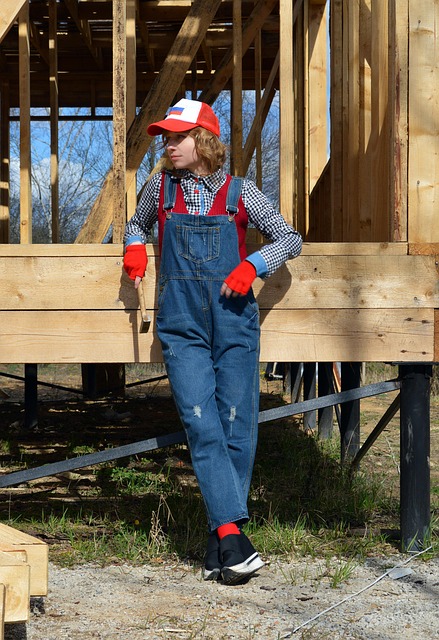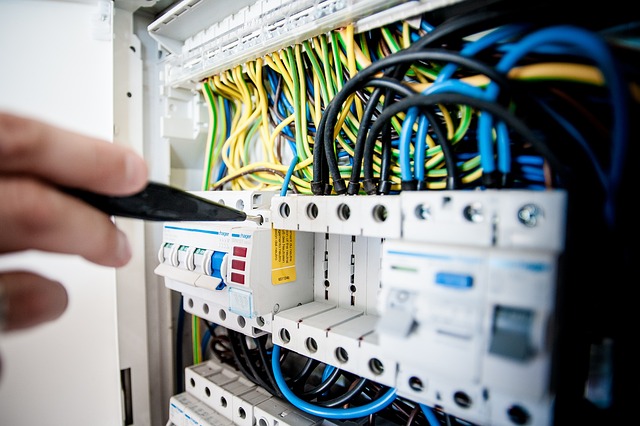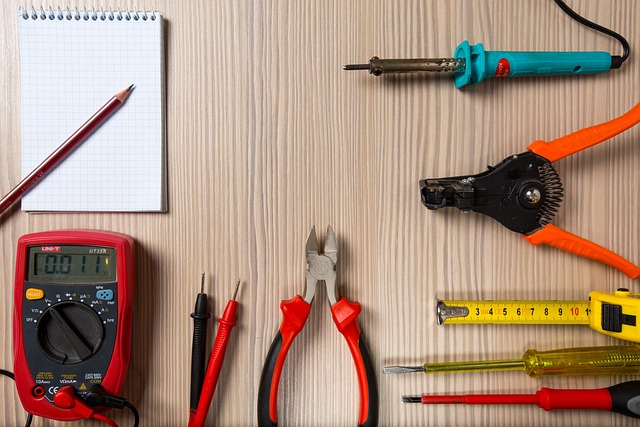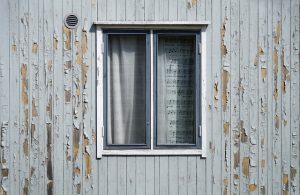Concrete patching and repair are crucial for maintaining residential foundations' structural integrity, preventing water intrusion, pest entry, and further deterioration. Common causes of concrete damage include natural elements, poor construction, shifting soil, and chemical corrosion. Early recognition and professional Residential Foundation Repair services are essential to address these issues before they compound. The process involves thorough inspection, surface preparation, selecting appropriate patching compounds, and sealing for long-lasting protection. Professional repair ensures structural integrity, enhances aesthetics, and extends the lifespan of concrete surfaces like driveways and foundations. Proper maintenance, including drainage and crack sealing, is vital to prevent costly repairs. Acting swiftly on signs of damage is crucial, with professionals providing accurate assessments and comprehensive solutions. Post-repair care involves regular inspections, keeping the area clean, and applying suitable sealers to ensure longevity.
Concrete patching and repair services are essential components of residential foundation maintenance. Understanding the importance of this process, especially in addressing concrete damage, is crucial for homeowners looking to preserve their properties’ structural integrity. This article explores various aspects of concrete patching, from identifying common causes of foundation damage to outlining the benefits of professional repairs. By delving into the repair process, material selection, and post-maintenance care, you’ll gain valuable insights into ensuring your home’s foundation remains robust and stable, thereby avoiding costly long-term repairs.
Understanding Concrete Patching and Its Importance in Residential Foundation Repair

Concrete patching and repair are essential components of residential foundation maintenance. It involves the process of fixing cracks, holes, or damages in concrete surfaces, particularly focusing on foundations. This practice is crucial for several reasons, primarily related to structural integrity and long-term cost savings. By addressing concrete issues early, homeowners can prevent more severe foundation problems that may lead to extensive repairs or even structural collapse.
In the context of residential foundation repair, patching allows for the restoration of the surface’s strength and stability. It ensures water doesn’t seep through, causing further damage, and also prevents pests and debris from entering. This simple yet effective method can extend the lifespan of a home’s foundation, making it a cost-efficient solution that promotes the overall durability of residential structures.
Common Causes of Concrete Damage in Foundations

Concrete damage in foundations is a prevalent issue that often requires professional intervention, especially for residential properties. Several factors contribute to this problem, making it crucial to address them promptly. One of the primary causes is natural elements such as excessive rainfall and freezing temperatures, which can lead to cracks and heaving. Over time, these minor issues compound, causing significant structural damage if left unrectified.
Another common cause is poor initial construction, including inadequate concrete mixing or improper placement during installation. Cracks may also appear due to shifting soil or heavy machinery operations nearby. Moreover, chemical corrosion from deicing salts used on adjacent roads can accelerate concrete deterioration. Prompt recognition of these issues and engagement with expert residential foundation repair services are essential to prevent further damage and ensure the longevity of the structure.
The Process of Concrete Patching and Repair

Concrete patching and repair services are essential for maintaining the structural integrity and aesthetic appeal of concrete surfaces, especially in residential properties. The process begins with an inspection to identify the extent of damage, which could range from cracks in the pavement to large holes in the driveway or foundation. Once the damaged area is pinpointed, the next step involves preparing the surface. This preparation includes cleaning the area to remove any debris or loose concrete and ensuring proper drainage to prevent water accumulation beneath the repair.
After preparation, a suitable patching compound is chosen based on the size and type of damage. Smaller cracks and chips may use a quick-drying, ready-mixed epoxy or polyurethane, while larger repairs might require a more robust mix. The compound is then applied, filling the voids and creating a smooth surface. For residential foundation repair, this process not only enhances the appearance but also addresses potential structural issues caused by water intrusion or settlement. Once the patching compound hardens, it’s finished and sealed to provide long-lasting protection against future damage.
Benefits of Professional Concrete Repair Services

Professional concrete patching and repair services offer numerous benefits, especially for residential properties. One of the primary advantages is ensuring structural integrity. Concrete is a robust material but can be susceptible to damage over time due to weather conditions, heavy traffic, or accidental impacts. Professional repair services identify these issues early on, preventing small cracks from becoming significant structural problems that could compromise the safety and stability of a home’s foundation.
These services also enhance the aesthetic appeal and longevity of concrete surfaces. Whether it’s repairing cracks in driveways, fixing damaged sidewalks, or patching up foundations, professionals use specialized techniques and materials to match the existing concrete seamlessly. This not only restores the original look but also increases the lifespan of these structures, saving homeowners from frequent replacements and costly renovations. Moreover, for residential foundation repair, professionals can provide solutions tailored to specific issues, ensuring a solid and secure base for the entire property.
Selecting the Right Materials for Concrete Patching

When it comes to concrete patching and repair, especially for residential foundation repair, choosing the right materials is paramount. Different concrete surfaces require distinct approaches and products to ensure durability and longevity. For instance, a crack in a driveway might need a flexible sealant that can expand and contract with the seasons, whereas a damaged walkway may demand a more robust, high-strength concrete mix.
Professionals in residential foundation repair understand this variability and tailor their patching methods accordingly. They consider factors like weather conditions, traffic volume, and structural integrity to select materials. High-quality epoxy injections, for example, can fortify larger cracks, while lightweight mortar might be preferable for shallow repairs. The goal is to match the repair solution with the specific concrete surface and structural demands, ensuring a strong and aesthetically pleasing result.
Tips for Maintaining Concrete Surfaces to Prevent Damage

Regular maintenance is key to keeping concrete surfaces in top condition, preventing damage that may require costly repairs. One of the best ways to protect your concrete, especially around residential foundations, is to ensure proper drainage. Prevent water from pooling on the surface by installing adequate guttering and downspouts, directing stormwater away from the foundation. Another crucial tip involves sealing cracks as soon as they appear. Even small fissures can widen over time, allowing moisture and weeds to infiltrate, which weakens the concrete and may lead to more severe structural damage. A professional residential foundation repair service can offer effective sealing solutions tailored to your needs.
When to Call for Emergency Foundation Repair

If you’re noticing signs of damage or instability in your home’s foundation, it’s crucial to act swiftly. While some issues can be addressed with DIY methods, residential foundation repair often requires professional expertise, especially when dealing with emergency situations. Cracks in the foundation walls, uneven floors, or doors that stick or swing on their hinges are all indicators that something might be amiss. These symptoms could point to problems like settlement, heave, or even more severe issues like structural failure, which demand immediate attention.
In such cases, it’s best to call for emergency residential foundation repair services without delay. Professional contractors have the tools and knowledge to assess the damage accurately and provide effective solutions. They can offer temporary repairs to prevent further deterioration until a more comprehensive fix can be implemented, ensuring your home’s structural integrity and safety.
Ensuring Long-Lasting Results: Post-Repair Care and Maintenance

After a concrete patching and repair service, proper care and maintenance are crucial for achieving long-lasting results, especially in residential foundation repair scenarios. This includes regular inspection to identify any new cracks or signs of damage early on. Homeowners should be vigilant about checking their property after repairs, as even minor issues can indicate a bigger problem beneath the surface.
Additionally, keeping the repaired area clean and free from debris is essential. Regular cleaning prevents the accumulation of dirt and other particles that could hinder healing. Moreover, applying a suitable sealer or coating to the patched area can provide extra protection against moisture penetration, which is a common cause of concrete deterioration. This step, often recommended by professional repair services, ensures the longevity of the fix and prevents future damage.
